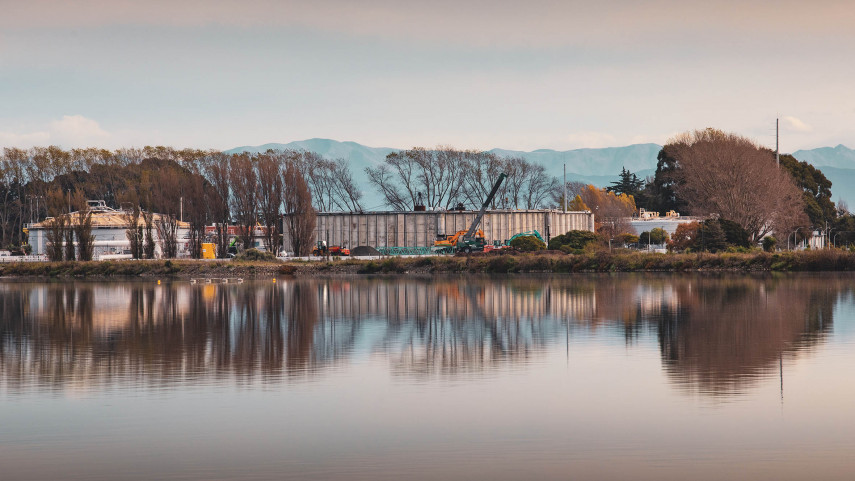
Wastewater treatment plant fire investigation completed

Share this story
Christchurch City Council’s Insurance Subcommittee met Friday afternoon to consider the investigation report into the cause and origin of the wastewater treatment plant fire.
The fire investigator’s report has found that the fire was caused by the ignition of flammable material on the roof, after subcontractor staff used an unauthorised heat source during repairs to the trickling filter roof.
Chief Executive Dawn Baxendale says the investigator’s findings are consistent with the Fire and Emergency New Zealand report that was published in December 2022, and there are no new factors that would affect the Council’s insurance claim.
“We know the local residents have had a terrible time coping with odours after the fire destroyed about 60 per cent of the plant’s capacity to treat wastewater.
“The full report will not be made publicly available until all insurance and legal proceedings have been completed. The Insurance Subcommittee has requested that I release what information I can without jeopardising any proceedings.
“We are committed to resolving these proceedings as soon as possible, as we know the residents want answers,” Mrs Baxendale says.
FAQs:
Why aren’t you able to release the full report if the findings are consistent with the FENZ report findings?
We are still working through the insurance and legal proceedings in the aftermath of the fire. This is a complex situation, with multiple insurance companies and legal teams involved. We are working through this as quickly as possible and it is a priority for us.
Why has it taken so long to publish this summary when the fire happened more than 18 months ago?
The investigators’ initial inspections of the trickling filters began immediately, and closer inspections of the suspected fire origin point occurred in the weeks following confirmation that the fire was extinguished. Comprehensive interviews were undertaken with Council staff. Where possible, interviews were undertaken with contractors and subcontractors. Council staff then worked closely with its insurer to gather the Council’s documents and information relating to the trickling filters to assist with the investigators’ determination as to cause of the fire. Further testing was required to rule out other potential causes of the fire. Following release of the FENZ report, no further testing is required.
Were the trickling filters insured?
Yes. The wastewater treatment plant was, and remains, fully insured.
Has the insurer settled the claim?
Council’s insurer accepted our claim soon after the fire. Since then, we have been working with them on investigating the cause of the fire, assessing the damage and what it would take to repair the damage, and estimating the cost of these repairs.
These processes have involved the Council engaging external experts where specialist expertise that we do not have in-house was needed. This is normal for insurance claims and there has been a collaborative approach between Council and our insurer throughout this process.
We acknowledge this has been a lengthy process and that the local community wants certainty around the future for the plant, however these are complex discussions to ensure the best outcome for our community.
How much is the claim?
As noted above we are still working through the costings of the reinstatement with our insurer and therefore not able to provide this detail.
How much has been spent so far?
We have spent $23 million since the fire in November 2021. These costs include the initial response to the fire, reconfiguring the plant, removing the filter material from the trickling filters and assessing the damage caused by the fire.
What steps have been put in place to ensure the oxidation ponds don’t emit a stench again this coming winter?
We have done what we can to expedite the recovery of the wastewater plant from this devastating event and support our community in light of the widespread hardship caused by the smell. The interim treatment process that went operational in September.
Over the warmer months the ponds performed very well and were biologically healthy, with good levels of biological oxygen demand and dissolved oxygen. We knew the biological health of the ponds would naturally struggle over the cooler months, which is why we installed the additional 16 aerators into Pond 1 earlier this year.
The ponds remained healthy and the levels of odour remained very low until about 22 May, when our monitors began to record an increase in H2S levels which coincided with a number of aerators being temporarily out of commission. These odours are intermittent and the five disc aerators have been repaired and reinstated.
The average hydrogen sulphide levels remain below 0.01 parts per million – well below the 0.03ppm threshold of concern we have adopted in consultation with Health New Zealand. Even though the levels are well under the threshold the odours are still noticeable at times.
